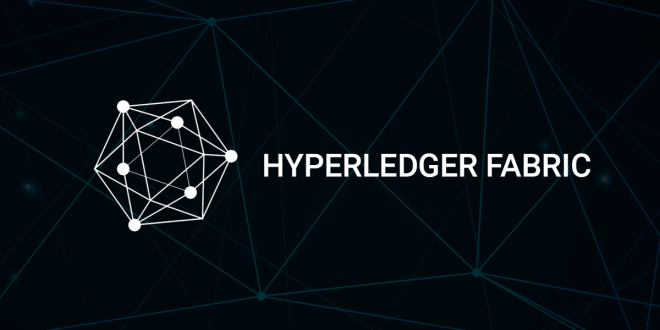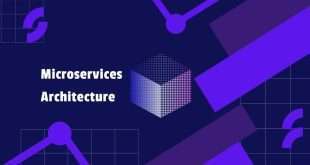In the ever-evolving landscape of blockchain technology, Hyperledger Fabric and microservices architecture have emerged as a powerful and winning combination. This cutting-edge duo is transforming the way we develop and deploy blockchain applications, offering unparalleled flexibility, scalability, and efficiency. In this comprehensive blog, we explore the fusion of Hyperledger Fabric and microservices, unraveling the true potential of this synergy for the future of blockchain development.
Understanding Microservices Architecture
Microservices architecture, often referred to as microservices, is an architectural style that structures an application as a collection of loosely coupled services. These services are designed to perform specific functions independently, promoting modularity and ease of development. By breaking down complex applications into smaller, manageable components, microservices enable seamless updates, maintenance, and scalability.
The benefits of microservices include enhanced fault isolation, the ability to deploy services independently, and improved development speed. With the flexibility to use different programming languages for different services, developers can focus on efficiency and productivity.
Exploring Hyperledger Fabric
Hyperledger Fabric is a blockchain framework that provides the foundation for building enterprise-grade blockchain solutions. As an open-source project under the Hyperledger umbrella, Fabric emphasizes privacy, security, and modularity, making it a preferred choice for business applications.
Fabric utilizes a permissioned blockchain network, granting access only to authorized participants, ensuring data confidentiality and integrity. Its modular architecture allows for pluggable consensus mechanisms, enabling organizations to tailor the network to their specific needs.
The Power of Integration
When microservices architecture is combined with Hyperledger Fabric, the result is a powerful ecosystem that unlocks new possibilities in blockchain development. Let’s explore how this combination benefits various aspects of blockchain application development.
Scalability and Flexibility
Hyperledger Fabric’s modular architecture and microservices’ decoupled design enable scalability on both fronts. Each microservice can be independently scaled based on demand, leading to a more efficient and adaptable blockchain network.
Rapid Development and Deployment
With microservices, development teams can work concurrently on different services, speeding up the development process significantly. Hyperledger Fabric’s comprehensive tooling and SDKs further facilitate the creation and deployment of blockchain applications.
Enhanced Security
Hyperledger Fabric’s permissioned blockchain, combined with microservices’ isolation, enhances the security of blockchain applications. Individual services can have tailored access controls, minimizing potential vulnerabilities.
Creating a Microservices-Based Hyperledger Fabric Network
To build a successful microservices-based Hyperledger Fabric network, consider the following key steps:
Define Business Use Cases
Identify the specific use cases that your blockchain application will address. Understanding the business requirements will guide the architecture and design of the microservices.
Design Microservices Architecture
Plan the microservices architecture carefully. Each service should have a well-defined purpose and interface, promoting reusability and maintainability.
Set Up Hyperledger Fabric Network
Install and configure the Hyperledger Fabric network, defining the channels, peers, and orderers. Implement smart contracts (chaincode) that will govern the interactions between microservices.
Develop Microservices
Create individual microservices according to the defined architecture. Each microservice should communicate through secure channels and adhere to the overall business logic.
Integration and Testing
Integrate the microservices into the Hyperledger Fabric network and conduct thorough testing. Ensure that each service interacts correctly and that the entire ecosystem operates seamlessly.
Addressing Common Challenges
Despite the evident advantages, combining Hyperledger Fabric and microservices can present certain challenges. Here are some common issues and strategies to address them:
Complexity of Microservices
The decentralized nature of microservices can lead to increased complexity. Proper documentation, version control, and consistent communication among teams can mitigate this challenge.
Data Consistency
Maintaining data consistency across microservices can be a challenge. Implementing event-driven architectures and using distributed databases can help address this issue.
Final World
The convergence of Hyperledger Fabric and microservices is reshaping the blockchain landscape. By leveraging the modularity, scalability, and security of microservices architecture with Hyperledger Fabric’s robust framework, developers can unlock limitless possibilities in blockchain application development.
Commonly Asked Questions
Q1. What makes microservices architecture ideal for blockchain development?
A1. Microservices architecture offers modularity, scalability, and flexibility, making it easier to develop and deploy blockchain applications while promoting efficient updates and maintenance.
Q2. How does Hyperledger Fabric ensure data security?
A2. Hyperledger Fabric adopts a permissioned blockchain approach, granting access only to authorized participants, ensuring data confidentiality and integrity.
Q3. Can I use different programming languages for different microservices?
A3. Yes, one of the advantages of microservices is the ability to use different programming languages for different services based on the team’s expertise and project requirements.
Q4. How can I ensure seamless communication between microservices in a Hyperledger Fabric network?
A4. Microservices can communicate through secure channels, such as APIs, enabling seamless interactions within the Hyperledger Fabric network.
Q5. What are the benefits of using event-driven architectures in this context?
A5. Event-driven architectures facilitate real-time communication and enable microservices to react to events, ensuring consistency and responsiveness in the blockchain ecosystem.
 webfily
webfily



